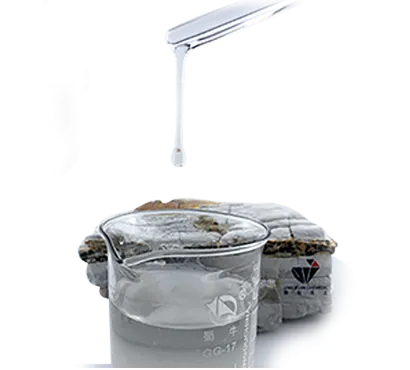
Nov . 29, 2024 19:38 Back to list
hpmc formulation
HPMC Formulation A Comprehensive Overview
Hydroxypropyl Methylcellulose (HPMC) is a versatile cellulose derivative that has gained significant traction in various fields, including pharmaceuticals, food, and construction. Its unique properties, such as solubility, viscosity, and film-forming capabilities, make it an essential ingredient in many formulations. This article delves into the formulation of HPMC, highlighting its importance, applications, and the factors influencing its use.
What is HPMC?
HPMC is a non-ionic, water-soluble polymer derived from cellulose. The modification process involves the substitution of hydroxyl groups in cellulose with hydroxypropyl and methyl groups. This alteration enhances the solubility of cellulose in cold water and introduces specific functional properties, making HPMC an ideal ingredient in various applications.
Importance of HPMC in Formulations
One of the key reasons HPMC is extensively used in formulations is its ability to form stable gels and thickened solutions. In pharmaceuticals, for example, HPMC is a crucial component in drug delivery systems, particularly in controlled-release formulations. It helps maintain the release of therapeutic agents over a prolonged period, thereby improving the bioavailability of the medication.
In the food industry, HPMC serves as a thickener, emulsifier, and stabilizer. It is often employed in gluten-free and low-fat products to improve texture and mouthfeel. The ability of HPMC to form a gel at various concentrations enables food manufacturers to create products that closely mimic the sensory attributes of traditional formulations.
Applications of HPMC
1. Pharmaceutical Formulations HPMC is widely used in the production of solid dosage forms, such as tablets and capsules. It acts as a binder, controlling the release of active pharmaceutical ingredients (APIs). Furthermore, HPMC is employed in suspensions and emulsions, where it provides viscosity and stability.
2. Cosmetics and Personal Care In the cosmetics industry, HPMC is utilized in products like lotions, creams, and gels. Its thickening and stabilizing properties ensure a smooth texture and prolonged shelf-life, enhancing the overall consumer experience.
hpmc formulation

3. Construction Materials HPMC is also used in construction applications, particularly in cement-based products. It improves workability and extends the open time of tile adhesives and grouts, allowing for easier application and adjustment on site.
4. Food Products In the food industry, HPMC's emulsifying and stabilizing properties find application in sauces, dressings, ice creams, and baked goods. Its ability to retain moisture and control texture has made it a preferred ingredient in modern food formulation.
Factors Influencing HPMC Formulation
When formulating with HPMC, several factors must be considered
- Viscosity Grades HPMC is available in various viscosity grades, which influence its performance in different applications. Selecting the appropriate grade is crucial to achieving the desired consistency and stability.
- Dissolution Temperature HPMC’s solubility is temperature-dependent. Understanding the dissolution characteristics is vital for formulating products that rely on specific release profiles.
- Concentration Levels The concentration of HPMC within a formulation significantly affects its thickening and gelling tendencies. Optimizing concentration is critical to meeting regulatory standards and product efficacy.
- pH Sensitivity HPMC is relatively stable across a wide pH range, but formulations subjected to extreme pH levels may require additional considerations to maintain product integrity.
Conclusion
In summary, Hydroxypropyl Methylcellulose (HPMC) is a versatile and essential ingredient in numerous formulations across various industries. Its unique properties make it a valuable asset in pharmaceuticals, food, cosmetics, and construction. Understanding the factors influencing HPMC formulation can help manufacturers develop products that meet consumer demands while ensuring efficacy and stability. As research and technology advance, the applications and effectiveness of HPMC will likely continue to expand, paving the way for innovative solutions across different sectors.
-
Versatile Hpmc Uses in Different Industries
NewsJun.19,2025
-
Redispersible Powder's Role in Enhancing Durability of Construction Products
NewsJun.19,2025
-
Hydroxyethyl Cellulose Applications Driving Green Industrial Processes
NewsJun.19,2025
-
Exploring Different Redispersible Polymer Powder
NewsJun.19,2025
-
Choosing the Right Mortar Bonding Agent
NewsJun.19,2025
-
Applications and Significance of China Hpmc in Modern Industries
NewsJun.19,2025







